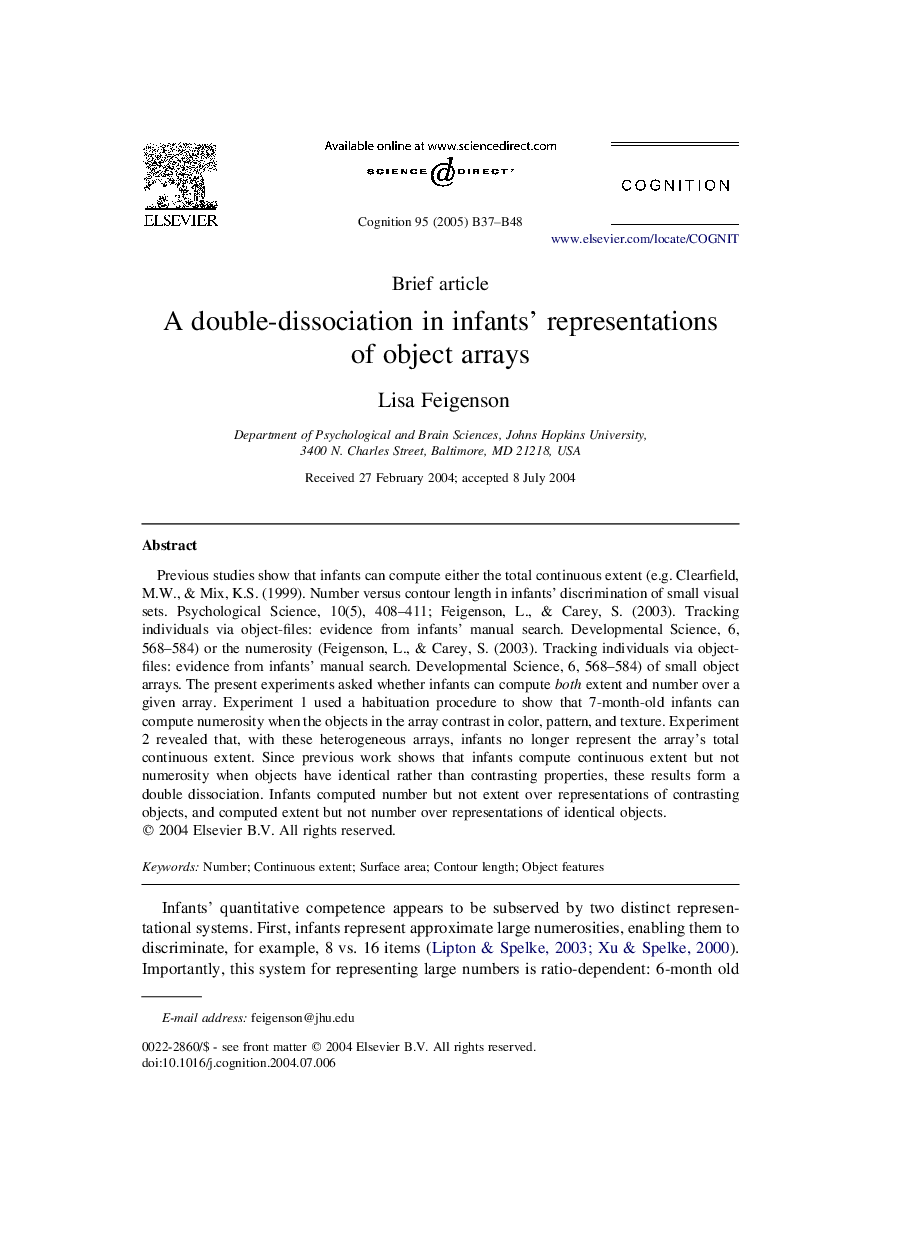| Article ID | Journal | Published Year | Pages | File Type |
|---|---|---|---|---|
| 10458145 | Cognition | 2005 | 12 Pages |
Abstract
Previous studies show that infants can compute either the total continuous extent (e.g. Clearfield, M.W., & Mix, K.S. (1999). Number versus contour length in infants' discrimination of small visual sets. Psychological Science, 10(5), 408-411; Feigenson, L., & Carey, S. (2003). Tracking individuals via object-files: evidence from infants' manual search. Developmental Science, 6, 568-584) or the numerosity (Feigenson, L., & Carey, S. (2003). Tracking individuals via object-files: evidence from infants' manual search. Developmental Science, 6, 568-584) of small object arrays. The present experiments asked whether infants can compute both extent and number over a given array. Experiment 1 used a habituation procedure to show that 7-month-old infants can compute numerosity when the objects in the array contrast in color, pattern, and texture. Experiment 2 revealed that, with these heterogeneous arrays, infants no longer represent the array's total continuous extent. Since previous work shows that infants compute continuous extent but not numerosity when objects have identical rather than contrasting properties, these results form a double dissociation. Infants computed number but not extent over representations of contrasting objects, and computed extent but not number over representations of identical objects.
Related Topics
Life Sciences
Neuroscience
Cognitive Neuroscience
Authors
Lisa Feigenson,
